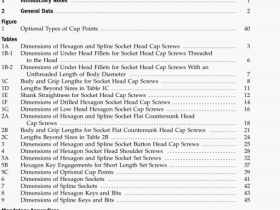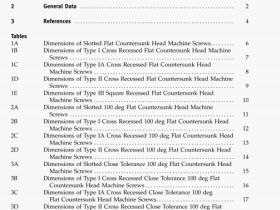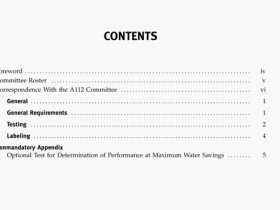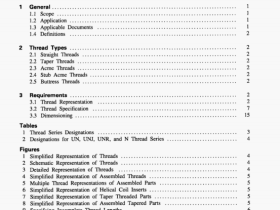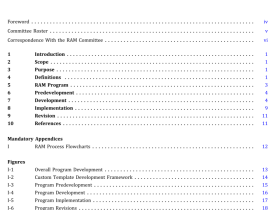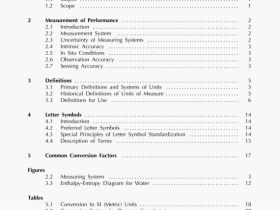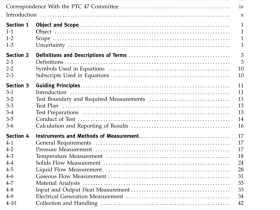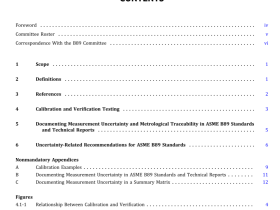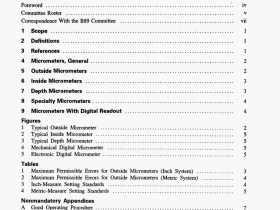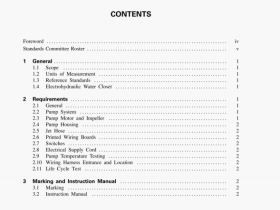ASME B30.7-2001 pdf download

ASME B30.7-2001 pdf download.BASE-MOUNTED DRUM HOISTS.
parts; on environmental conditions causing corrosion or wear; and on many variables that must be considered in each individual case. The rules given in the Standard must be interpreted accordingly, and judgment used in determining their application.
Some of the provisions of this Standard require compliance with information found in manuals or other documents supplied by the manufacturer with the equipment. The information includes recommendations, requirements, and instructions (e.g.. “the reeving shall be checked for compliance with the recommendations of the manufacturer”).
Compliance with the provisions should not preclude the possibility of consulting a qualified person. This is true particularly when: the equipment has been altered, repaired, or modified: the manuals or documents supplied by the manufacturer are no longer available:
or the manufacturer or a successor is no longer in business and the manuals are no longer available. However, the purpose of consulting a qualified person shall not be to avoid contacting the manufacturer and using the information supplied by the manufacturer.
The Standards Committee will be glad to receive criticisms of this Standard’s requirements and suggestions for its improvement, especially those based on actual experience in application of the rules.
Suggestions for changes to the Standard should be submitted to the Secretary of the B30 Committee. ASME. Three Park Avenue, New York, NY 10016- 5990. and should be in accordance with the following format:
(a) cite the specific paragraph designation of the pertinent volume:
(b) indicate the suggested change (addition, deletion. revision. etc.);
(c) briefly state the reason and/or evidence for the suggested change;
(d) submit suggested changes to more than one paragraph in the order that the paragraphs appear in the volume.
The B30 Committee will consider each suggested change in a timely manner in accordance with its procedures.
Section I: Scope
This Standard applies to the construction, installation. operation. inspection, and maintenance of jacks: power- operated cranes, monorails, and crane runways: power- operated and manually operated derricks and hoists:
lifting devices, hooks, and slings: and cableways.
This Standard does not apply to track and automotive jacks. railway or automobile wrecking cranes, shipboard cranes, shipboard cargo-handling equipment, well-drilling derricks, skip hoists, mine hoists, truck body hoists, car or barge pullers. conveyors. excavating equipment. or equipment coming within the scope of the following
Committees: AlO, A17, A90. A92, A120, B20, B56. and B77.
Section II: Purpose
This Standard is designed to:
(a) guard against and minimize injury to workers, and otherwise provide for the protection of life, limb, and property by prescribing safety requirements;
(b) provide direction to owners, employers, supervisors, and others concerned with, or responsible for, its application: and
(c) guide governments and other regulatory bodies in the development, promulgation, and enforcement of appropriate safety directives.
Section III: Interpretations
Upon request. the B30 Committee will render an interpretation of any requirement of the Standard. Interpretations can only be rendered in response to a written request sent to the Secretary of the B30 Committee, ASME. Three Park Avenue. New York. NY 10016- 5990.
The request for interpretation should be clear and unanibiguous. It is further recommended that the inquirer submit his request utilizing the following format.
Subject: Cite the applicable paragraph number(s) and provide a concise description.
Edition: Cite the applicable edition of the pertinent volume for which the interpretation is being requested.
Question: Phrase the question as a request for an interpretation of a specific requirement suitable for general understanding and use, not as a request for approval of a proprietary design or situation. The inquirer may also include any plans or drawings which are necessary to explain the question: however. they should not contain any proprietary names or information.
